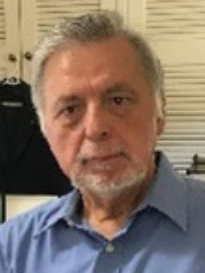
Keynote Lecture
Oleg Goushcha
National Aeronautics and Space Administration (NASA), Langley, VA.
Adjunct Assistant Professor, Manhattan College, Riverdale, NY., USA
Oleg Goushcha combines his work at NASA with an Assistant Professorship in Mechanical Engineering. His research focuses on experimental fluid mechanics studying turbulent, transitional and vortical flows. Previous and current work include wind tunnel tests of passive-scalar mixing and energy harvesting in turbulent flows, fluid-structure interaction, and transition to turbulence and relaminarization in pulsating flows. His research is inspired by current needs in the clean technology and biomedical industries. Close interaction between academia and industry drives Dr. Goushcha to provide his students with theoretical tools and their practical applications in the industry.
Dr. Goushcha holds a B.S. and a M.S. in Aerospace Engineering, from the University of California, Irvine, and a Ph.D. in Mechanical Engineering, from The City College of New York. He has received several awards and grants from the City College of New York.

Yannis Andreopoulos
CUNY Distinguished Professor
Michael Pope Chair for Energy Research, Department of Mechanical Engineering
The Grove School of Engineering, The City College of New York, USA
Yannis Andreopoulos holds the Michael Pope Chair for Energy Research and is Professor of Mechanical Engineering at The Grove School of Engineering at The City College of New York. His research expertise is in the areas of fluid dynamics which impact transportation, manufacturing, medicine, biology, energy, the environment, built environment, climate change and defense and homeland security. Andreopoulos has developed several innovative experimental techniques and designed a large-scale wind tunnel and a unique high energy/enthalpy experimental shock tube research facility for studies in various configurations where high spatial and temporal resolution is required.
Andreopoulos holds an Engineering Diploma (Dipl.‑Ing) in Mechanical and Electrical Engineering from the National Technical University in Athens, Greece, a M.Sc. (Aeronautics) from London University in England, a Diploma of Imperial College degree (D.I.C) and a PhD in aeronautical engineering from Imperial College of Science, Technology and Medicine of London University, UK. He held postdoctoral research appointments at the University of Karlsruhe, Germany, and at Princeton University where he gained extensive experience in laser techniques and optical methods.
Yannis Andreopoulos has been unanimously elevated by the CUNY Board of Trustees, to the rank of Distinguished Professor, the highest academic honor that CUNY can bestow upon faculty who have reached exceptional scholarly achievement.
Lecture title:
Vortices interacting with smart materials and structures: the case of energy harvesting
by Oleg Goushcha, Vahid Azadeh Ranjbar, Yiannis Andreopoulos
The lack of understanding and the complexity of vortex induced vibration (VIV) physics combined with a diverse range of applications have motivated a number of studies in this field. While large vibration amplitude due to VIV in general should be avoided in the design of engineering systems since the induced deflections can cause significant structural stresses, new applications related to harnessing small-scale energy from the ambient environment using VIV have emerged in the last decade which have revived the interest in this field. Recent advances in decreasing the power consumption of electronic devices, such as remote sensors, have bolstered the interest in clean and renewable energy harvesting. Converting ambient mechanical vibration to electrical power by using electromechanically coupled smart materials has been the main focus of the present energy-harvesting research. In the last several years, research has concentrated on harvesting energy from fluid flows, which otherwise is wasted, by using vibrating structures, mostly cantilever beams with piezoelectric layers, which are excited by fluid-structure interaction. The presentation will include configurations that can be classified as interactions with forcing stimuli provided by coherent fluid structures such as vortices with distinct travel frequency and spacing, like those in the wake of cylinders, discrete vortex rings, or randomly appearing turbulent eddies in boundary layers or grid turbulence. The excited motion of the structure with the piezoelectric transduction can lead to simple vibrations by flutter or complex VIV.